
The Campanile of St. Mark's Cathedral or simply the Campanile of San Marco (Campanile di San Marco) is a tall bell tower with an observation deck in Venice.
The Campanile is one of the symbols of Venice, and it is clearly visible from many points of the historical part of the city.
This detached tower is the bell tower of St. Mark's Cathedral, and, like the cathedral itself, is located on the main square of Venice - St. Mark's Square (St. Mark's Square, Piazza San Marco).
There is a public viewing platform at the top of the tower.
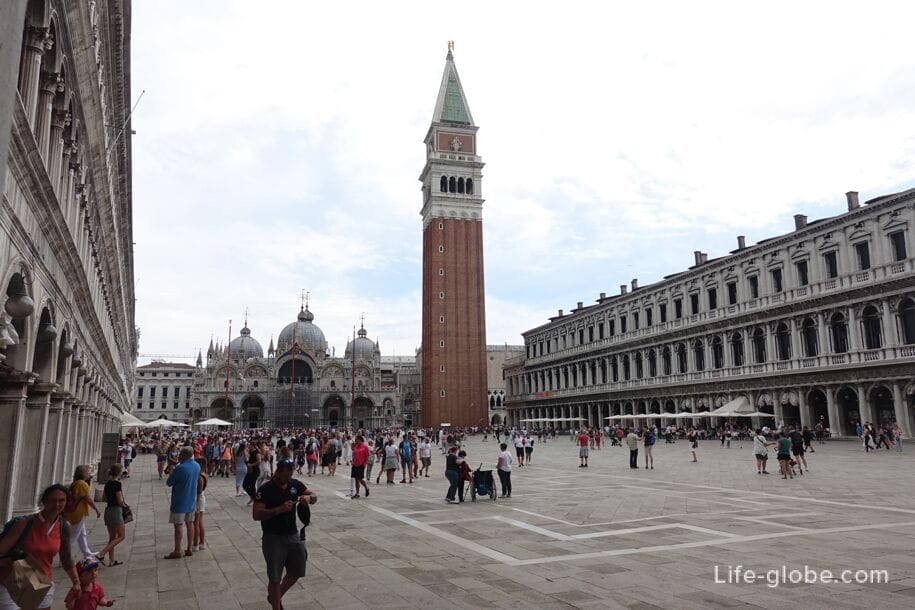
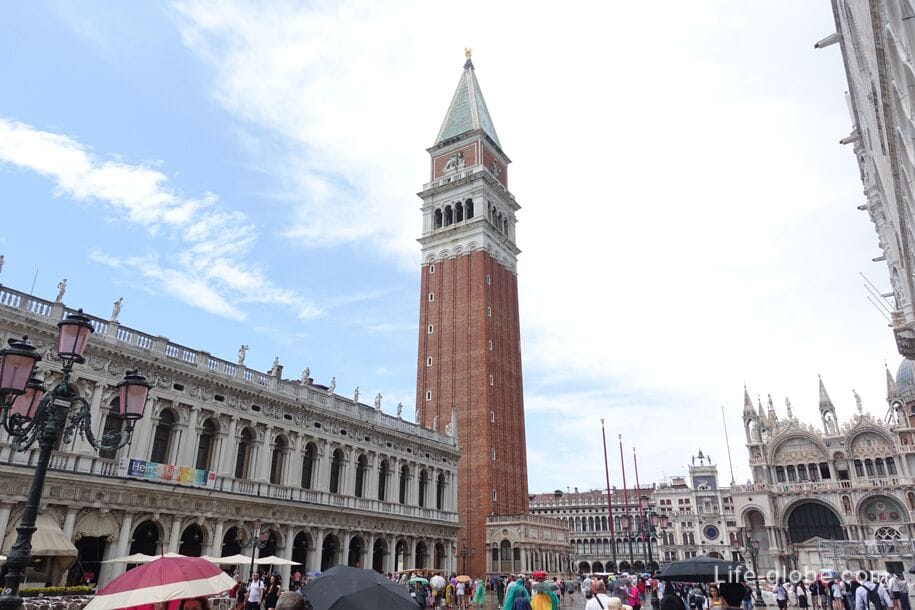
The tower was first built in the 12th century on the site of probably an early watchtower (9th-10th centuries), which also served as a lighthouse for those arriving in the city by sea, and rebuilt in its current form in the early 16th century (between 1511 and 1514) with the addition of a bell tower and a spire lined with copper and topped with something like a rotating platform with a statue of the archangel Gabriel acting as a weather vane. This campanile served as a model for the construction of other Venetian campaniles throughout the lagoon.
Visiting the bell tower was an entertainment for the famous guests of Venice, although the lords were careful in granting permission to foreigners, fearing that they might inspect the location of the city and its ports for military purposes. Galileo used the bell tower as an observatory to study the sky, and it was there, in 1609, that he demonstrated his telescope to the lords.
During the history of the bell tower suffered from lightning strikes and earthquakes. And on July 14, 1902, the bell tower collapsed as a result of careless construction work. The news of the collapse spread all over the world, and the city administration decided that the bell tower should be restored exactly the same as it was. The foundation stone was laid on April 25, 1903 and in 1912, on St. Mark's Day, a new bell tower was opened. Externally, the building was an exact copy of the former bell tower, but already built with greater safety and static stability, and the upper part of the tower was rebuilt using original fragments and on the model of 1822.
Today, the bell tower of San Marco is not only one of the symbols and one of the main attractions of Venice, but also the tallest building in the city.
The bell tower is a square structure with ladders, 12 meters wide and 98.6 meters high.
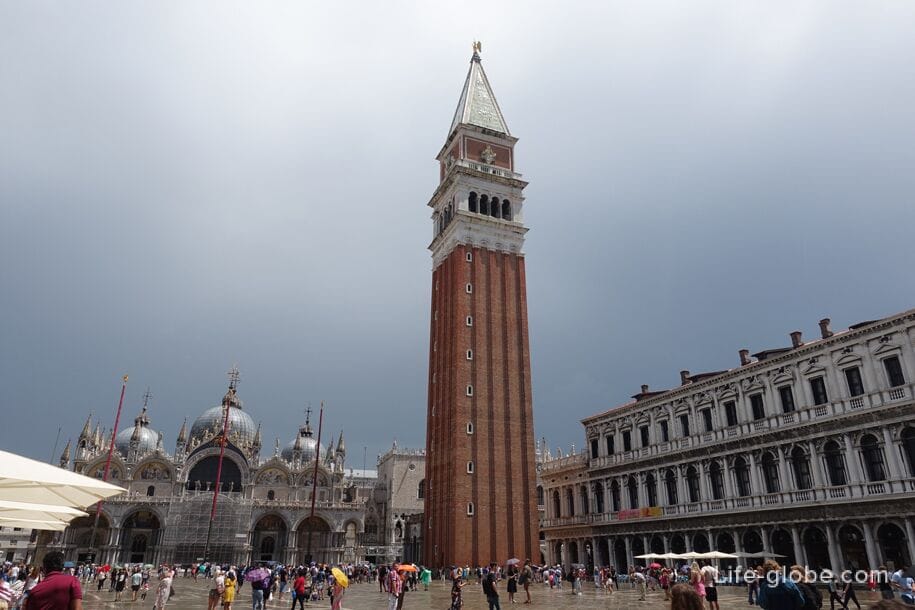
At the base of the bell tower adjoins a small loggia called Loggetta Sansovino (Loggetta Sansovino a Venezia), which was built between 1537 and 1549 by the architect Jacopo Sansovino (hence the name). Another name of the loggetta is "Loggetta Campanile" (Loggetta del Campanile).
This is a monument of Renaissance architecture and the loggetta was originally used to meet nobles, communicate with important dignitaries and officials. Since 1559, it has become a room for the guard corps (corpo di guardia) of the nearby Doge's Palace. In 1489, the building was destroyed by a lightning strike. In 1663, an open terrace with a balustrade was added to it. Since 1734, the building has been used for public events.
After the tragic collapse of the Campanile in 1902, the loggetta was restored using authentic preserved fragments and details of the marble cladding. In the 20th century, the Loggetta lost its former significance, and now it is used to enter the elevator that lifts tourists to the upper tier of the bell tower.
Lolzhetta is made of brick and lined with marble. It has arches and columns. It is decorated with allegorical statues: Minerva, Apollo, Mercury and the World, and bas-reliefs on the second tier, which allegorically represent Venice and its main subordinate territories: Crete and Cyprus.
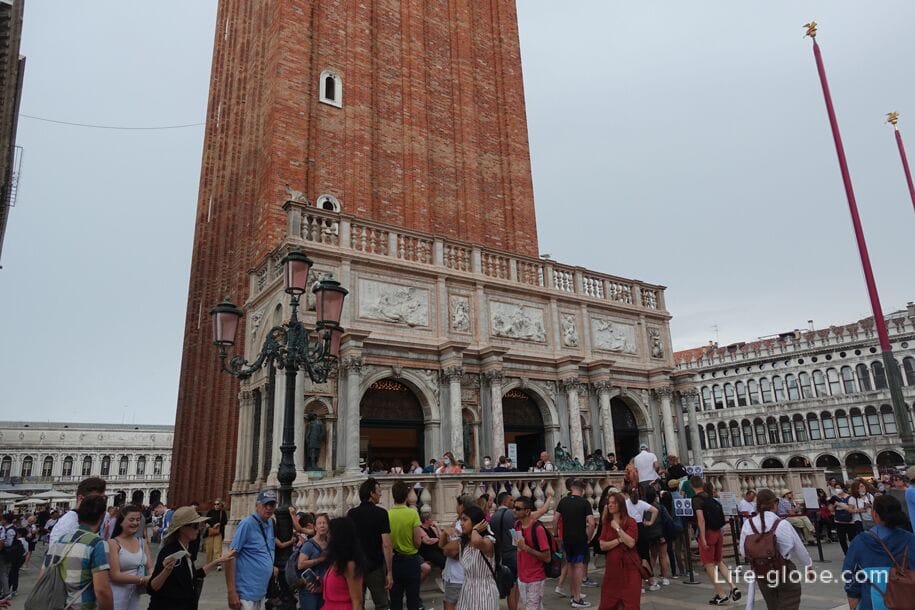
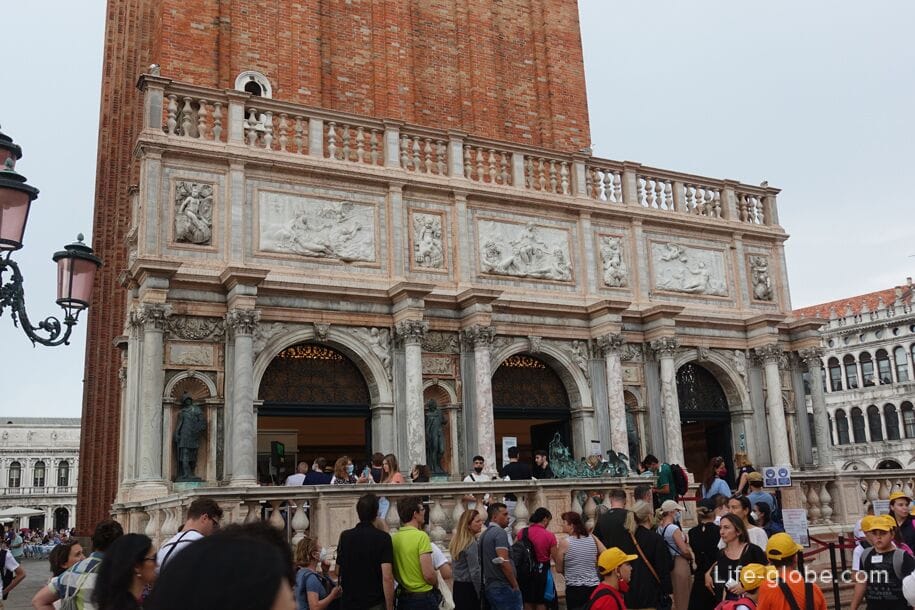
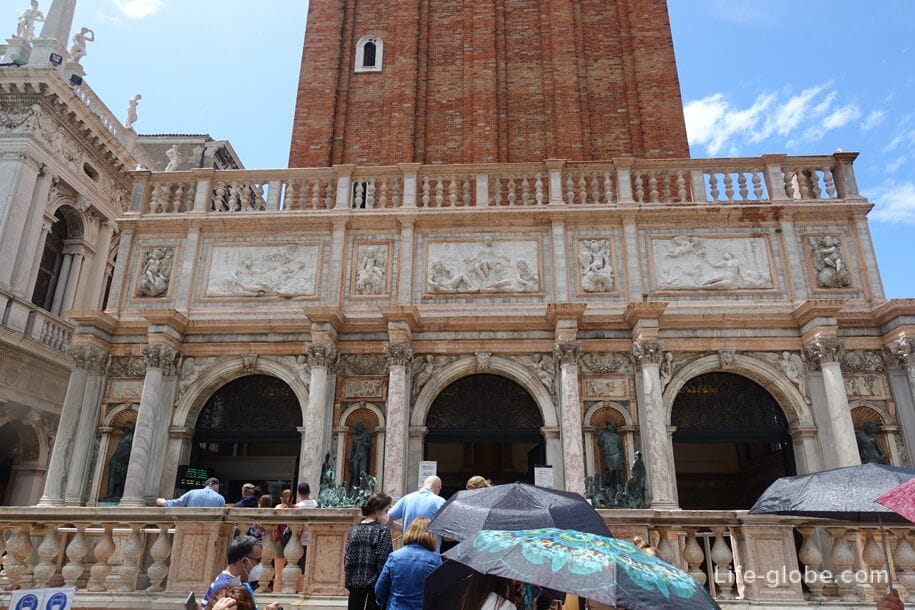
The upper part of the bell tower is now used as a 360-degree observation deck, which offers breathtaking views of the historic island Venice and the lagoon from a bird's-eye view.

Also here, on the bell platform, there are five bells, each of which had its own purpose. Of the five original bells, only the largest one remains, called "Maranhona", which previously called people to work early in the morning and rang during lunch. The other bells were destroyed when the tower collapsed in 1902 and are now replaced.

The attic of the bell tower is decorated with a sculpture of the lion of St. Mark and an allegorical figure of Venice in the image of Justice in a crown, sitting on a lion throne.
The very top of the bell tower is crowned by a sculpture in the form of the archangel Gabriel, 3.68 meters high.
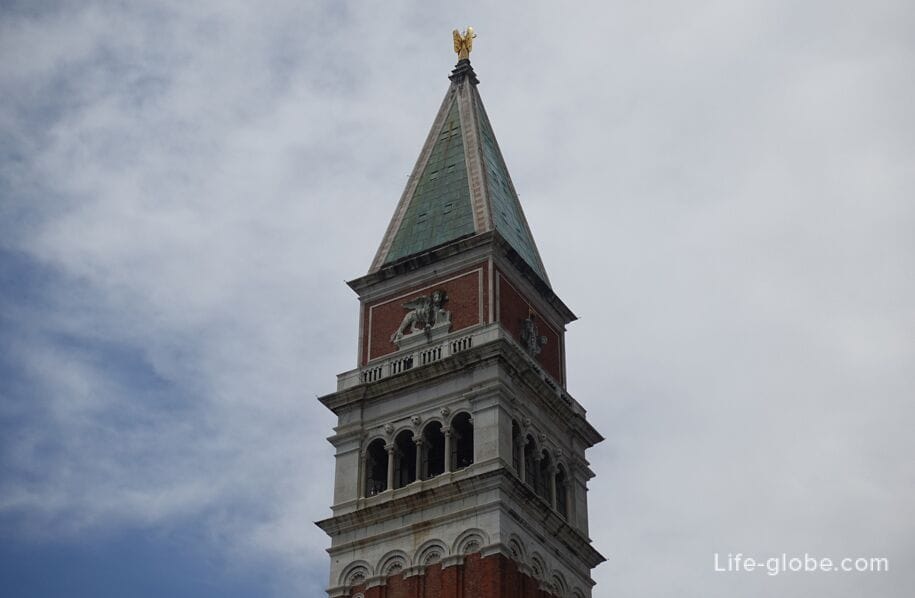

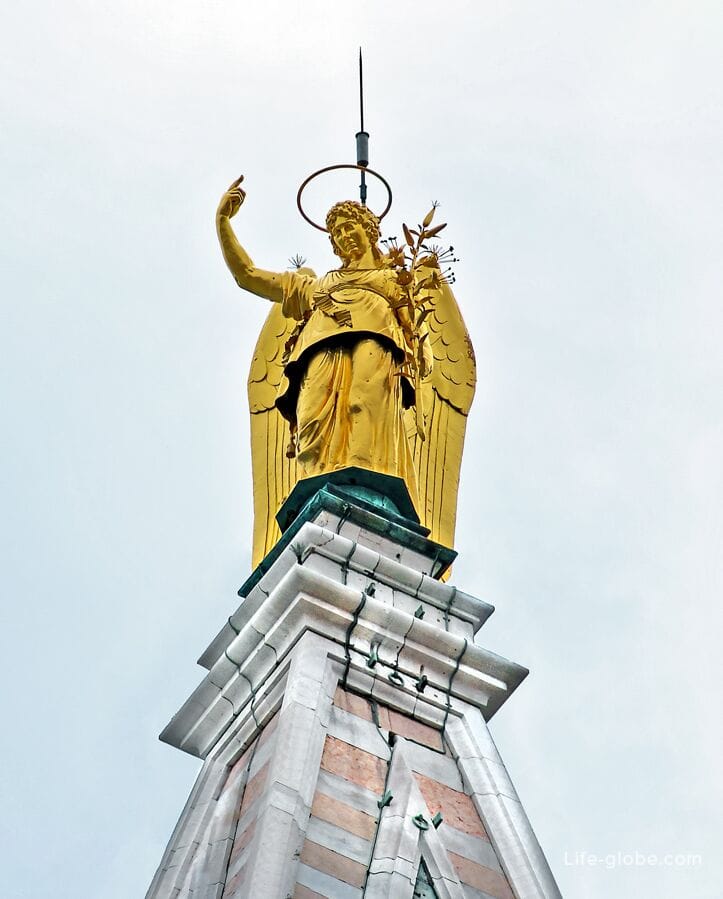
The ascent to the observation deck of the bell tower is paid. Entrance through the loggetta.
Tickets can be purchased at the ticket office or online in advance on the website.
The bell tower is open every day from 9:30 to 21:15 (the last entrance is at 20:45). Ticket price: 10 €; free for children under 6 years old. In case of adverse weather conditions (fog, strong wind, severe frost), the bell tower is closed.
We recommend you to check the exact information about the opening hours of the bell tower, the cost and places of ticket purchase, the conditions of visiting the observation deck, etc. on the official website of St. Mark's Cathedral: basilicasanmarco.it.
Address of the San Marco Campanile: P.za San Marco, 30124 Venezia VE, Italy.
Coordinates of the San Marco Campanile: 45°26'02.0"N 12°20'21.0"E (45.433889, 12.339167).
All accommodation facilities in Venice, including in the historic city center, can be viewed and booked here